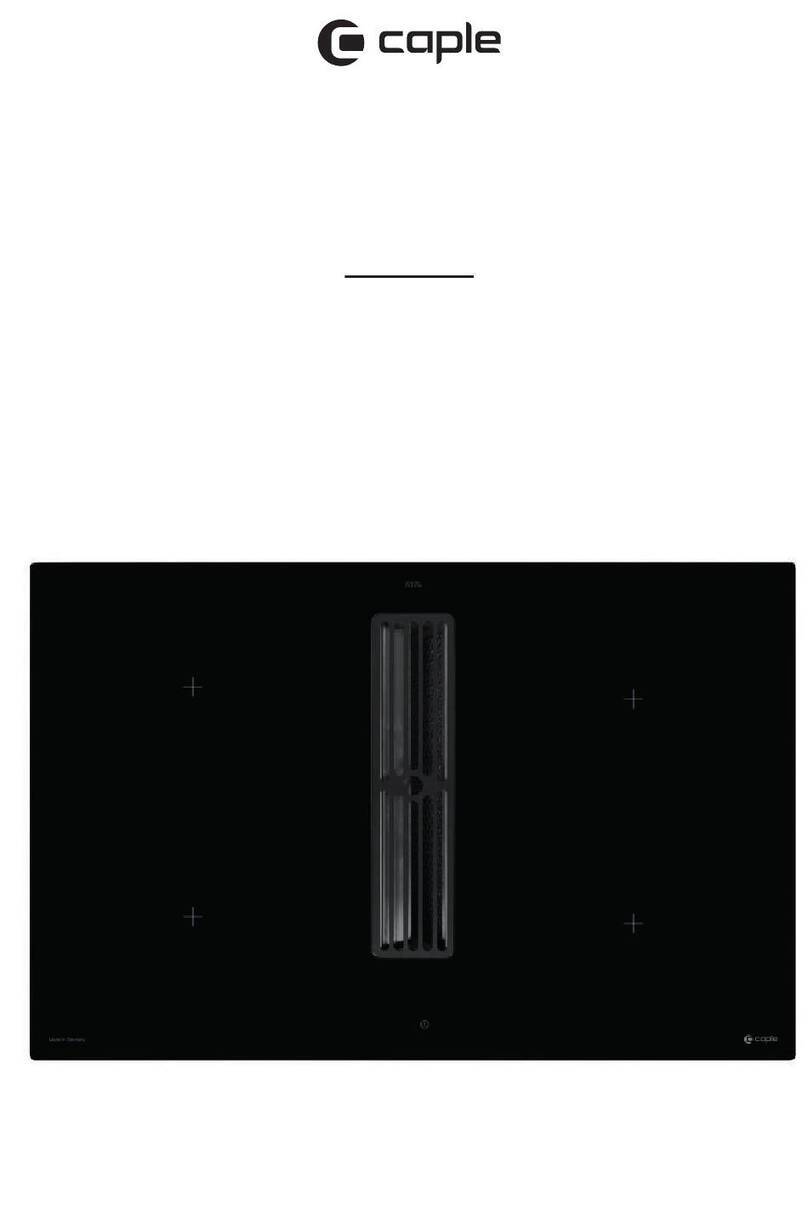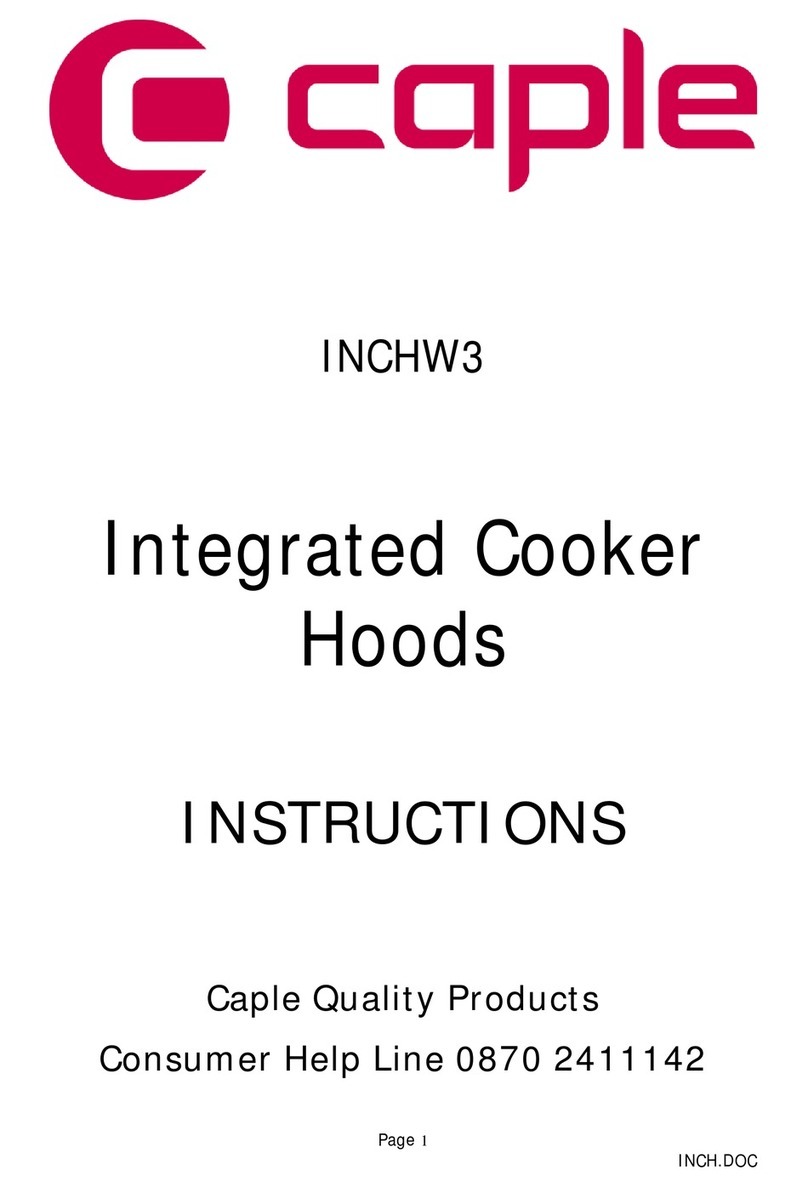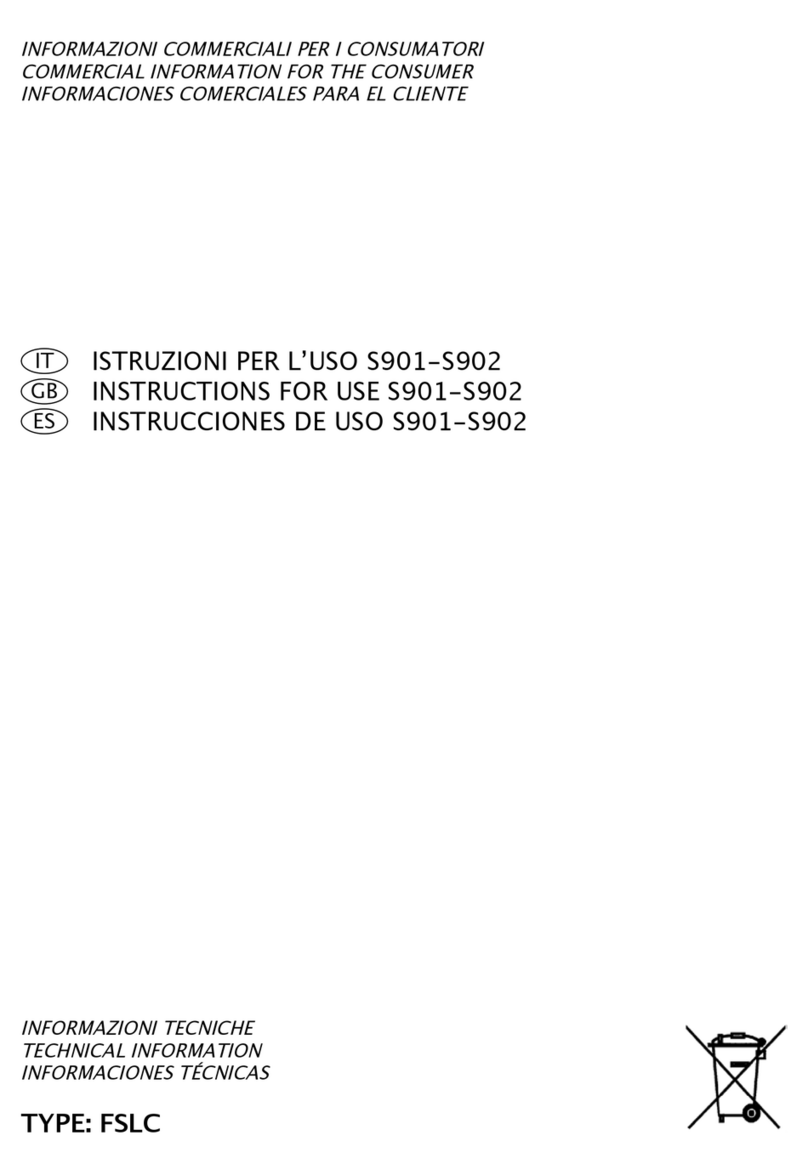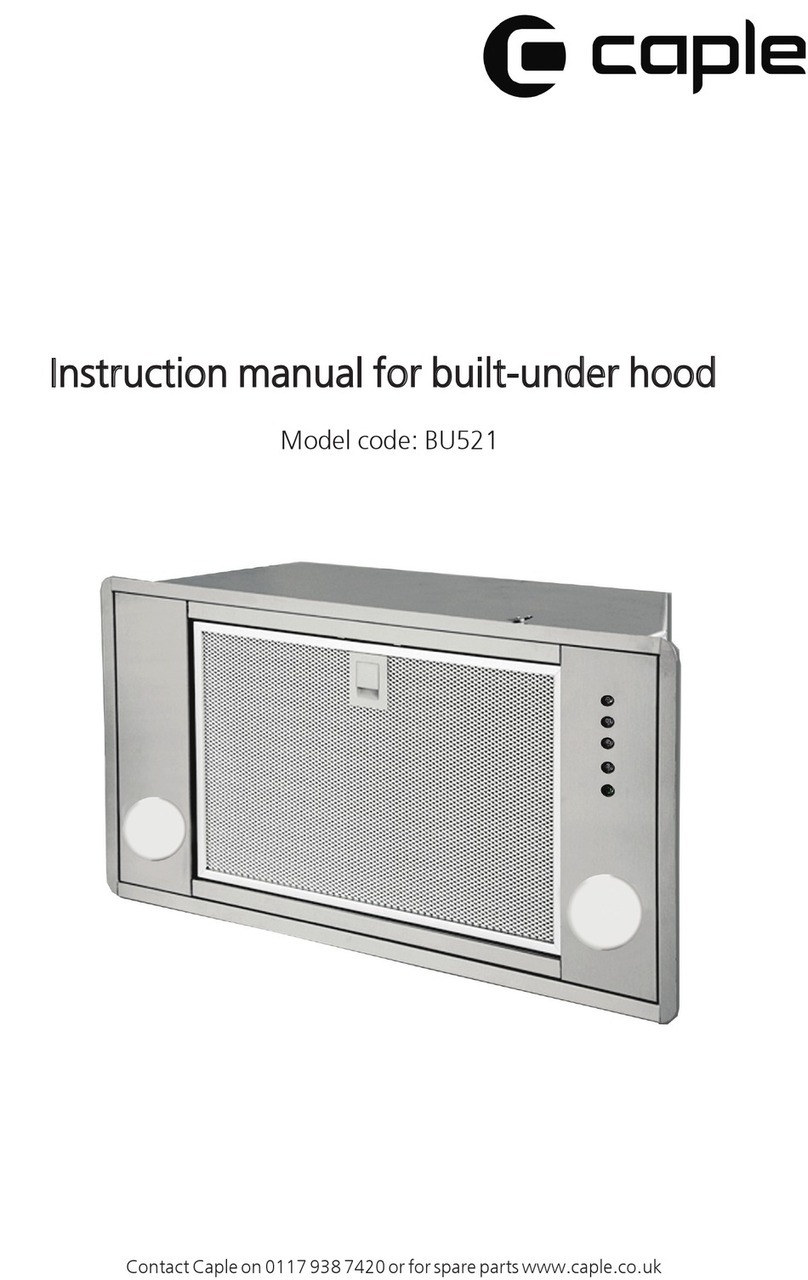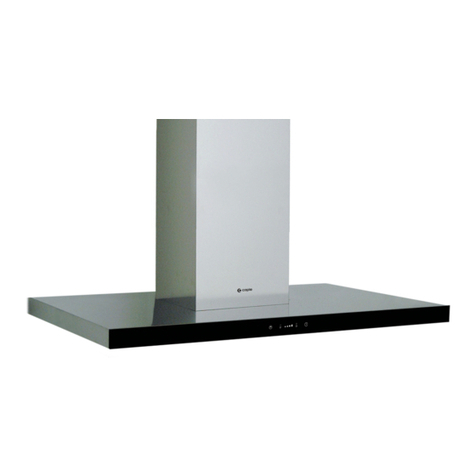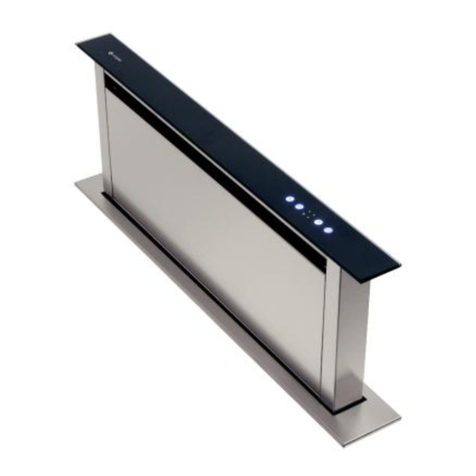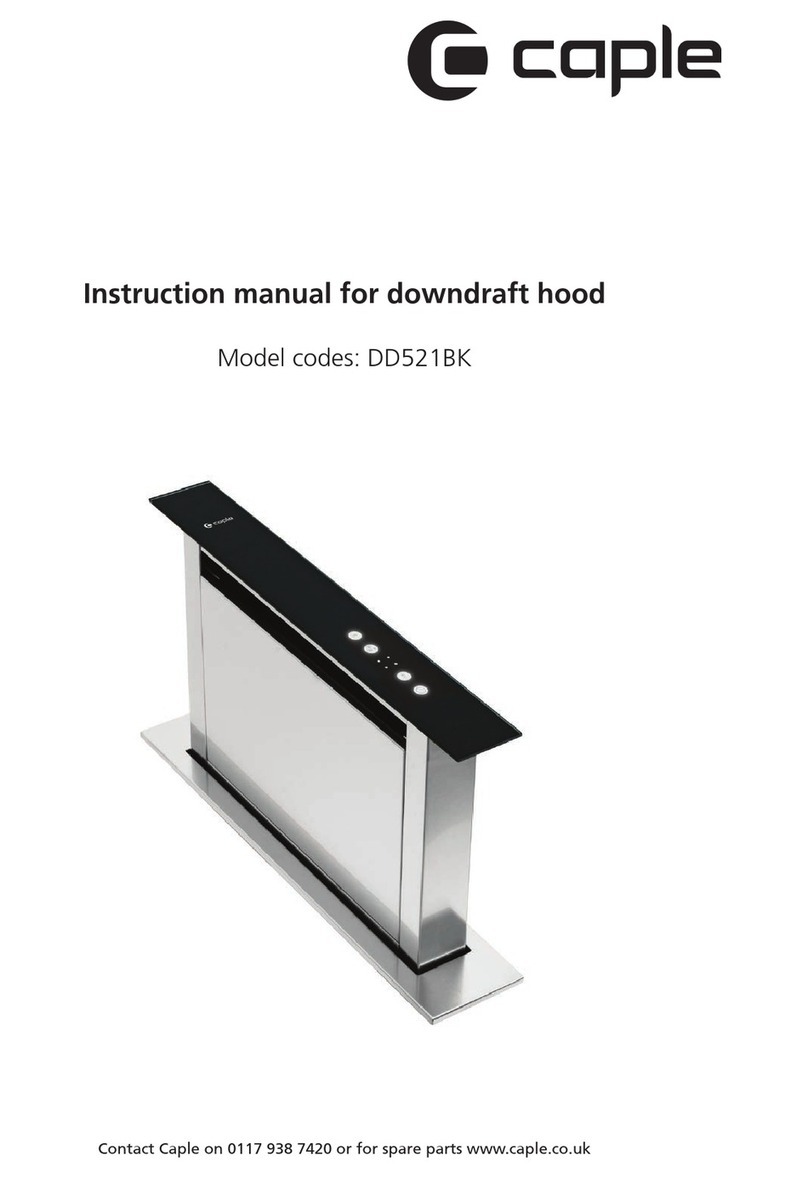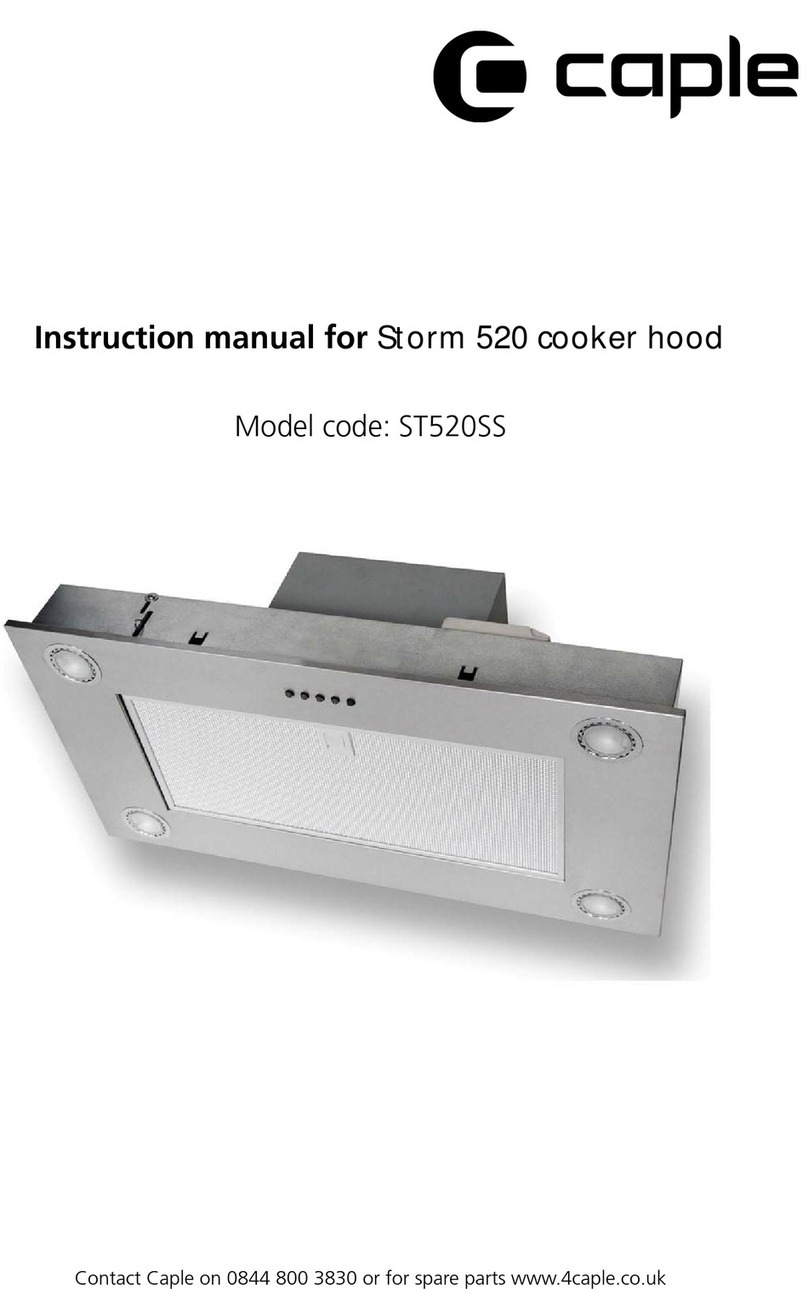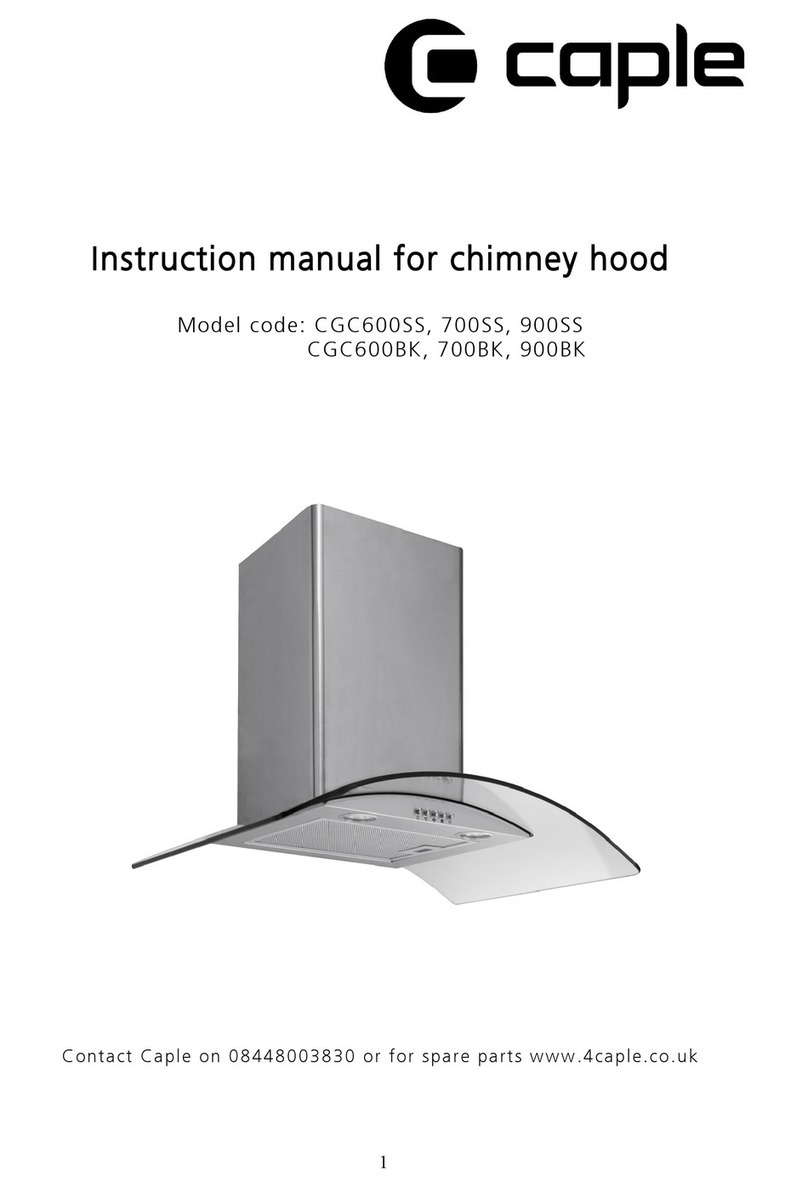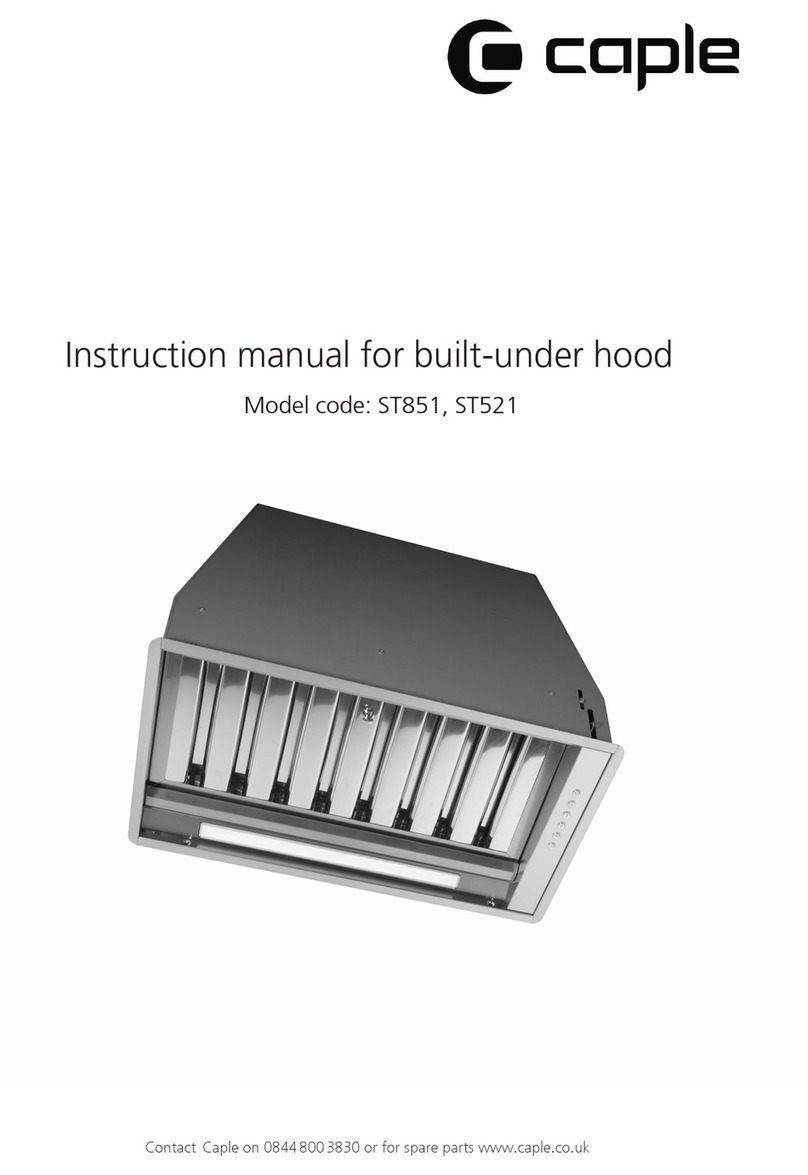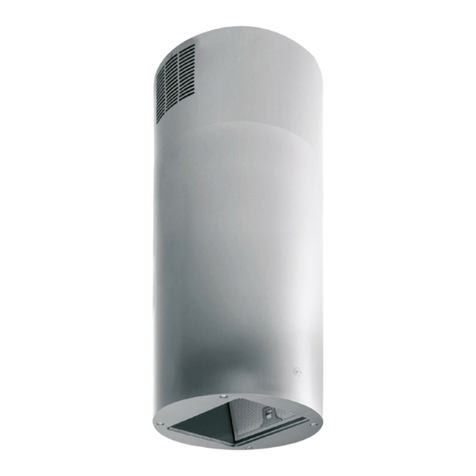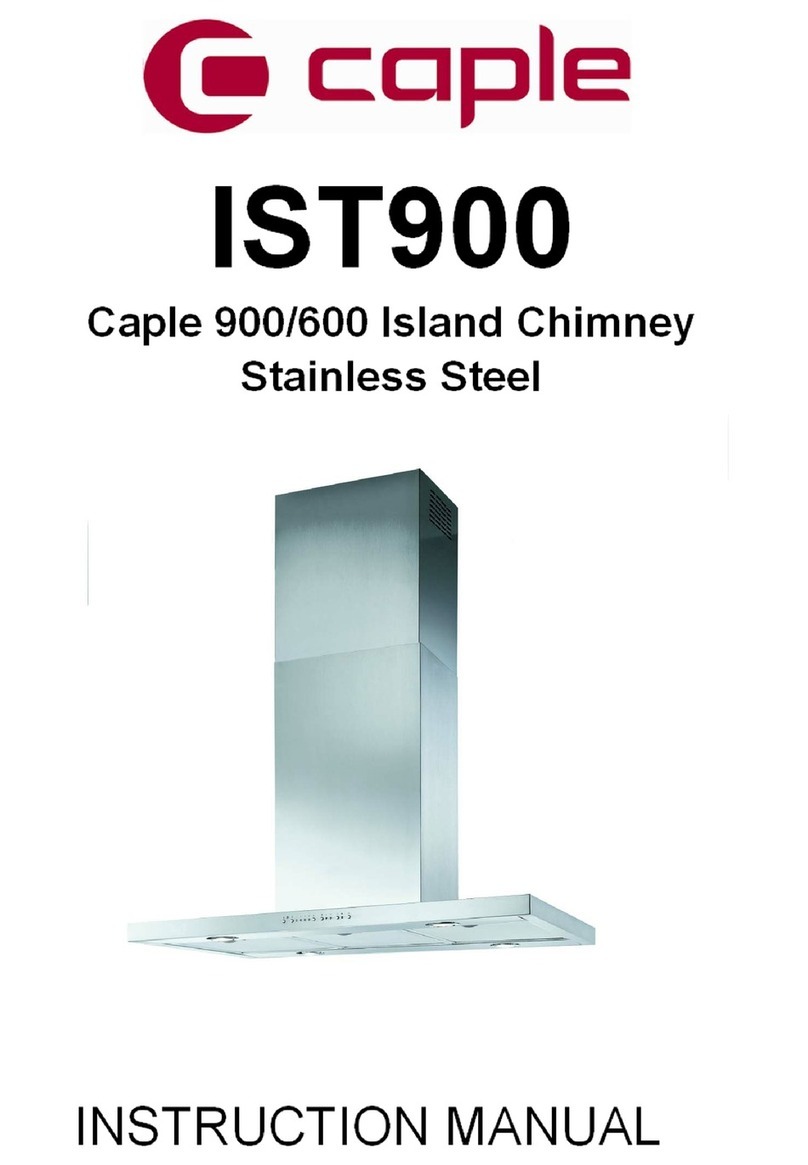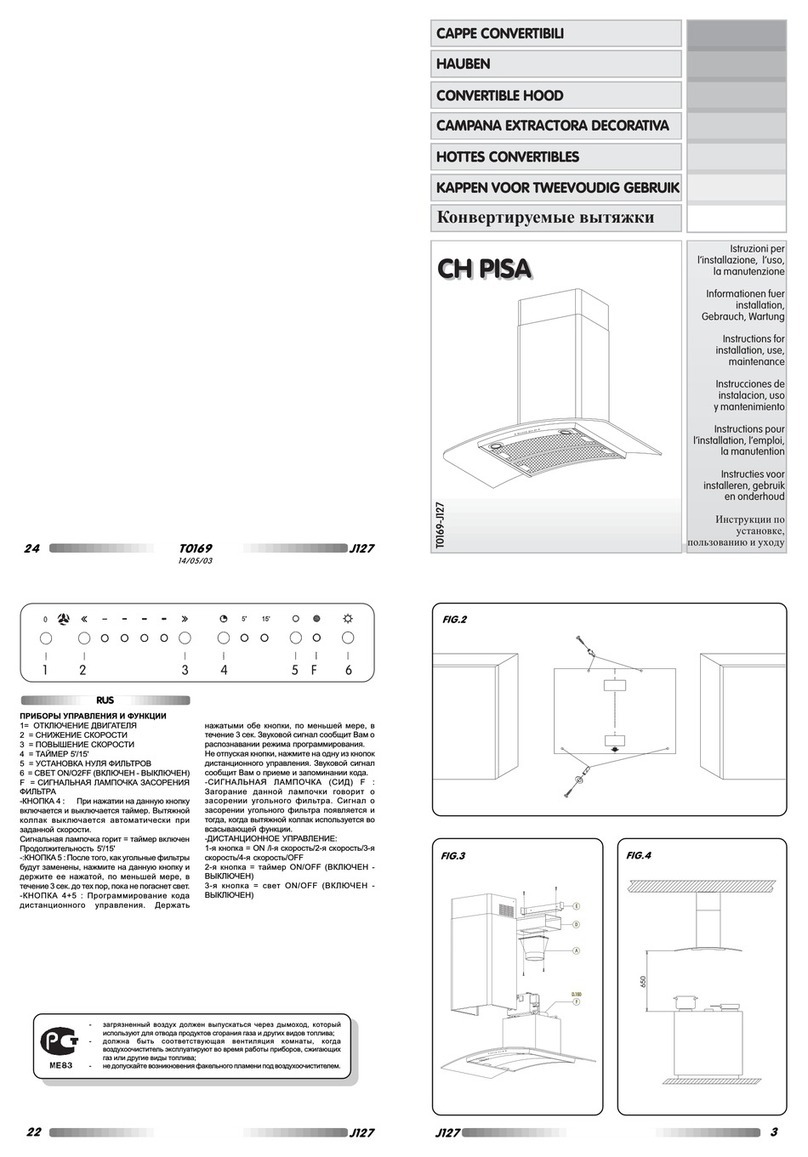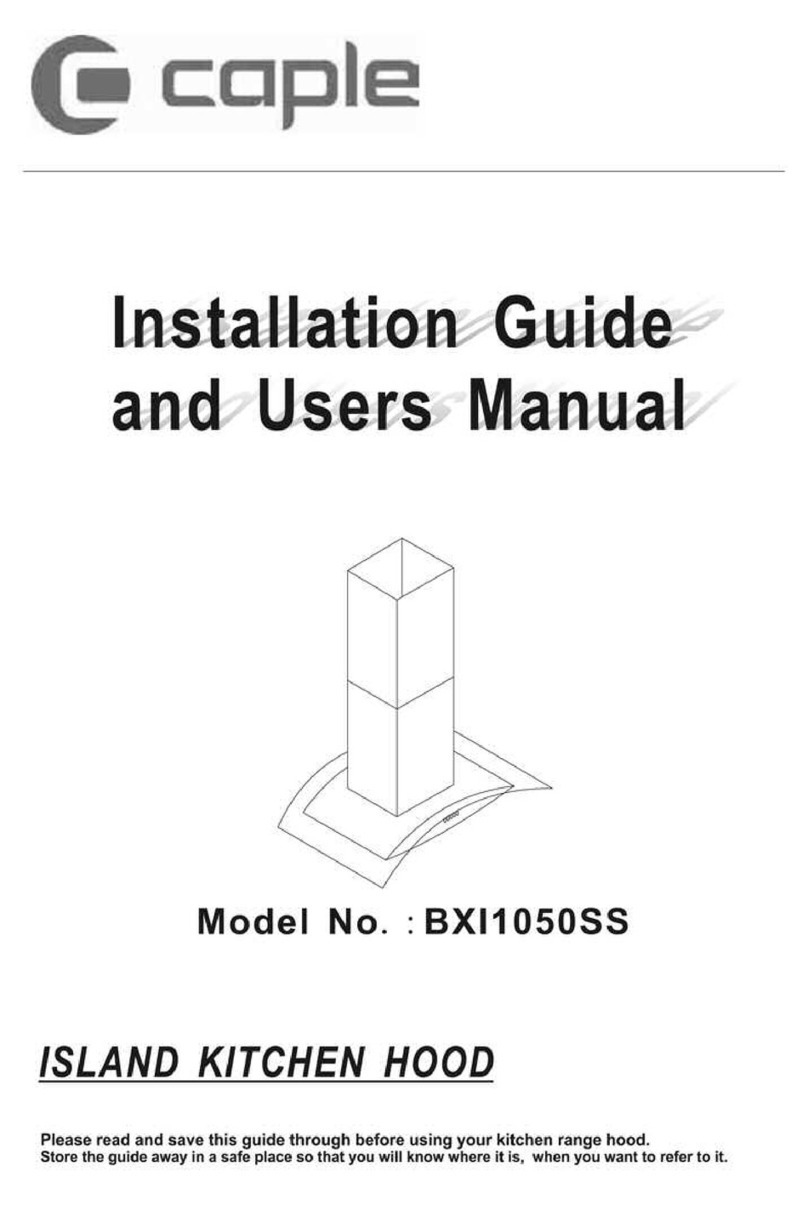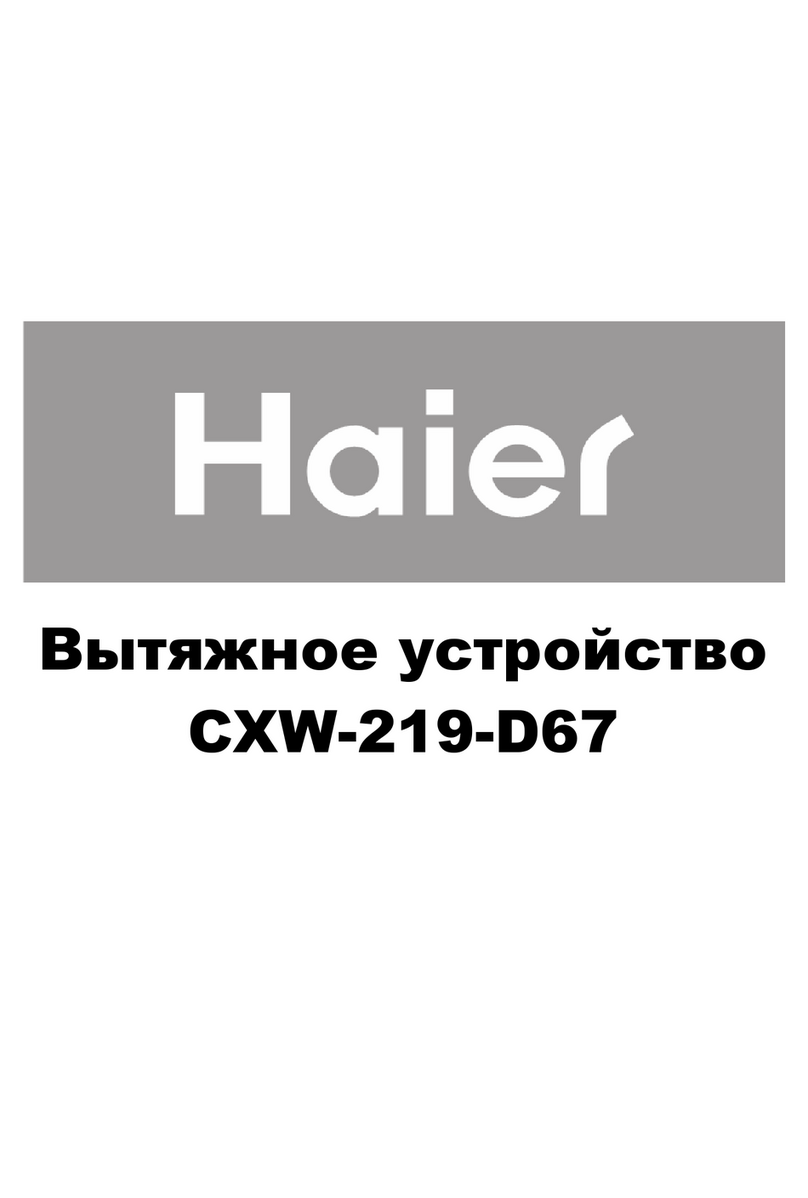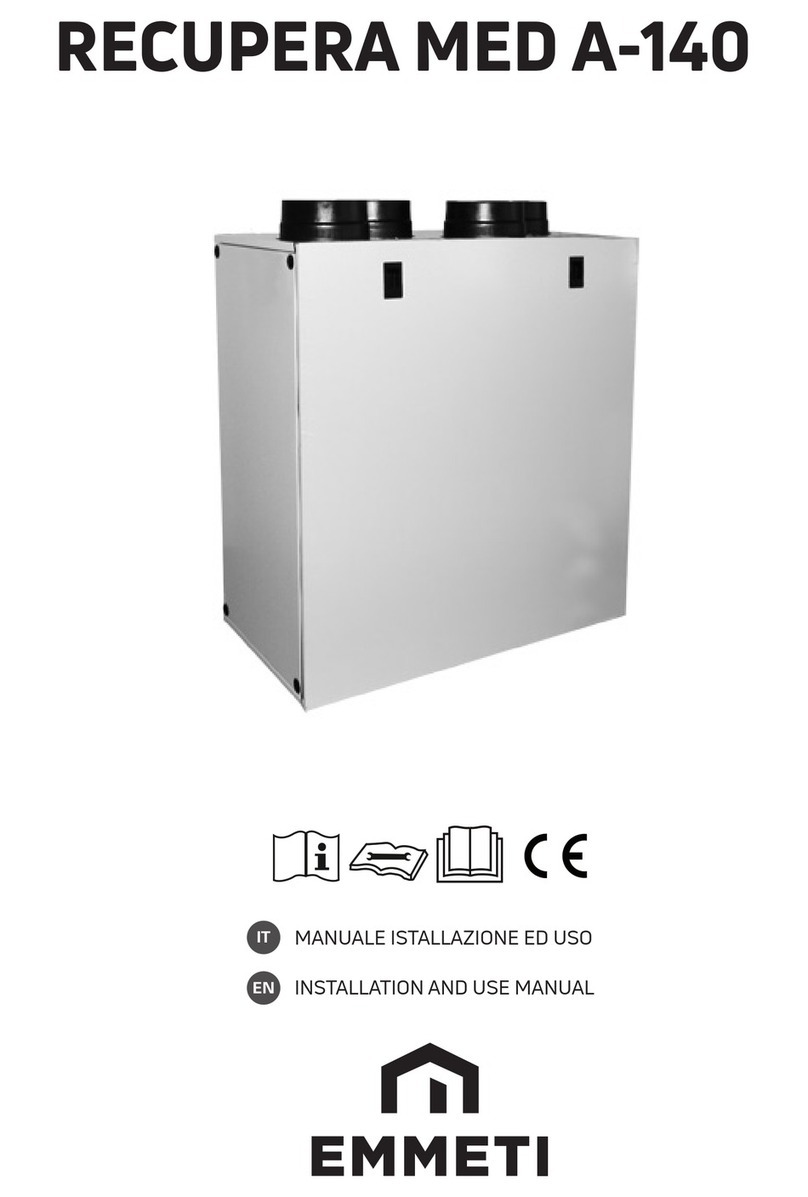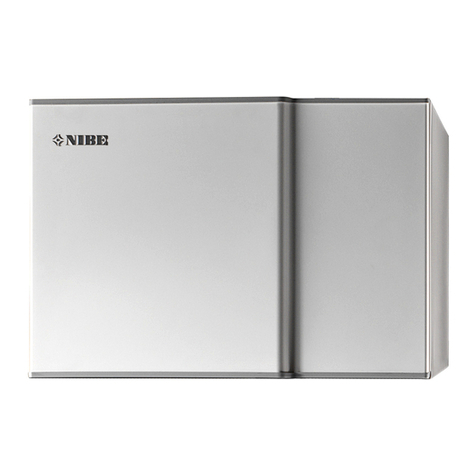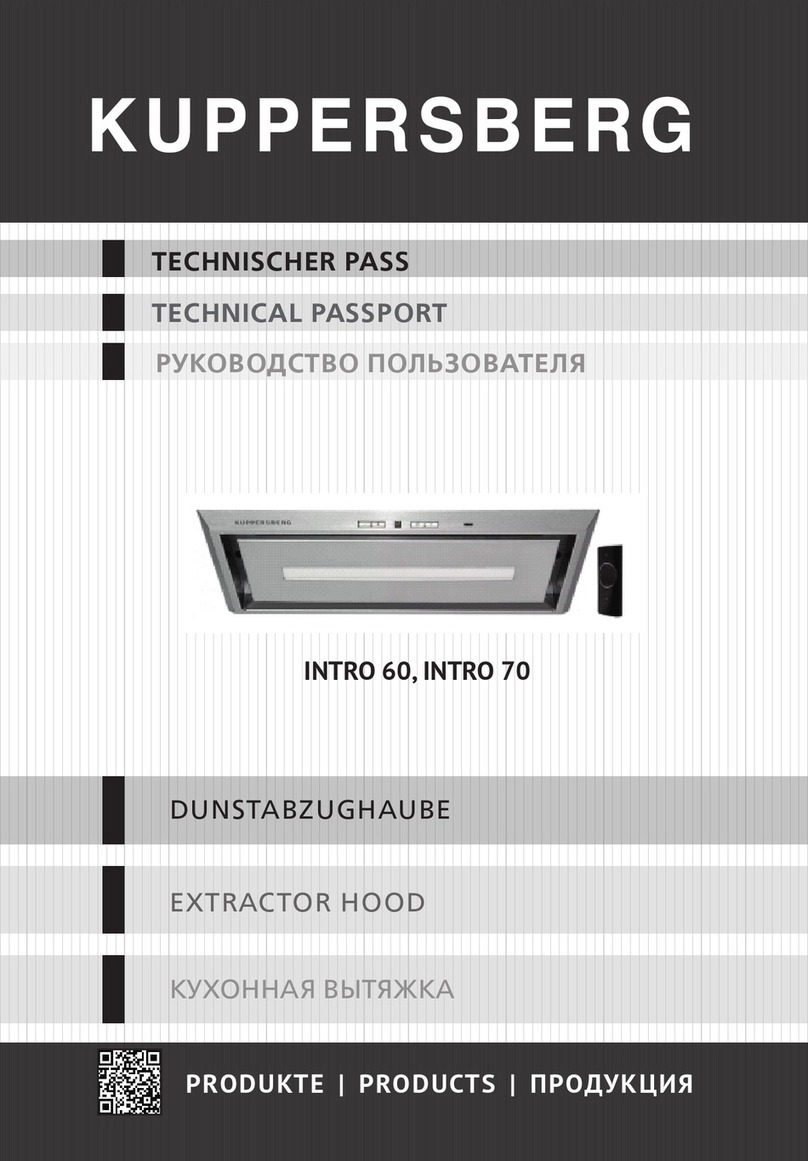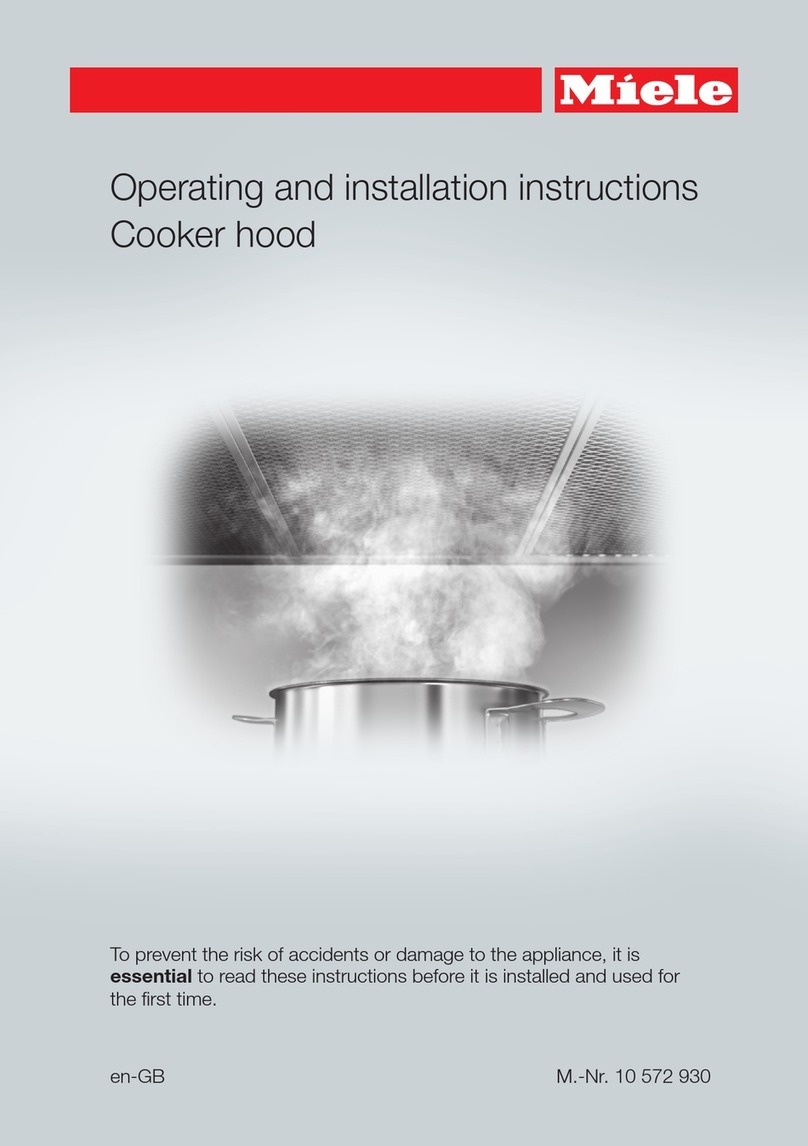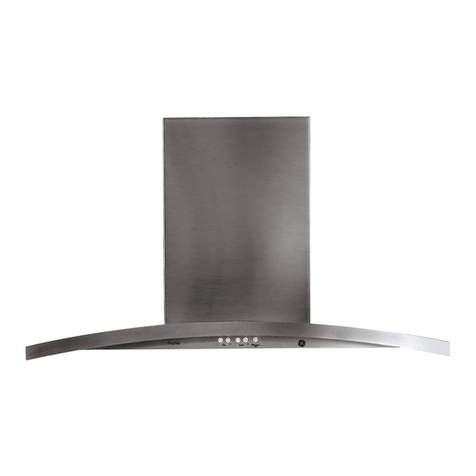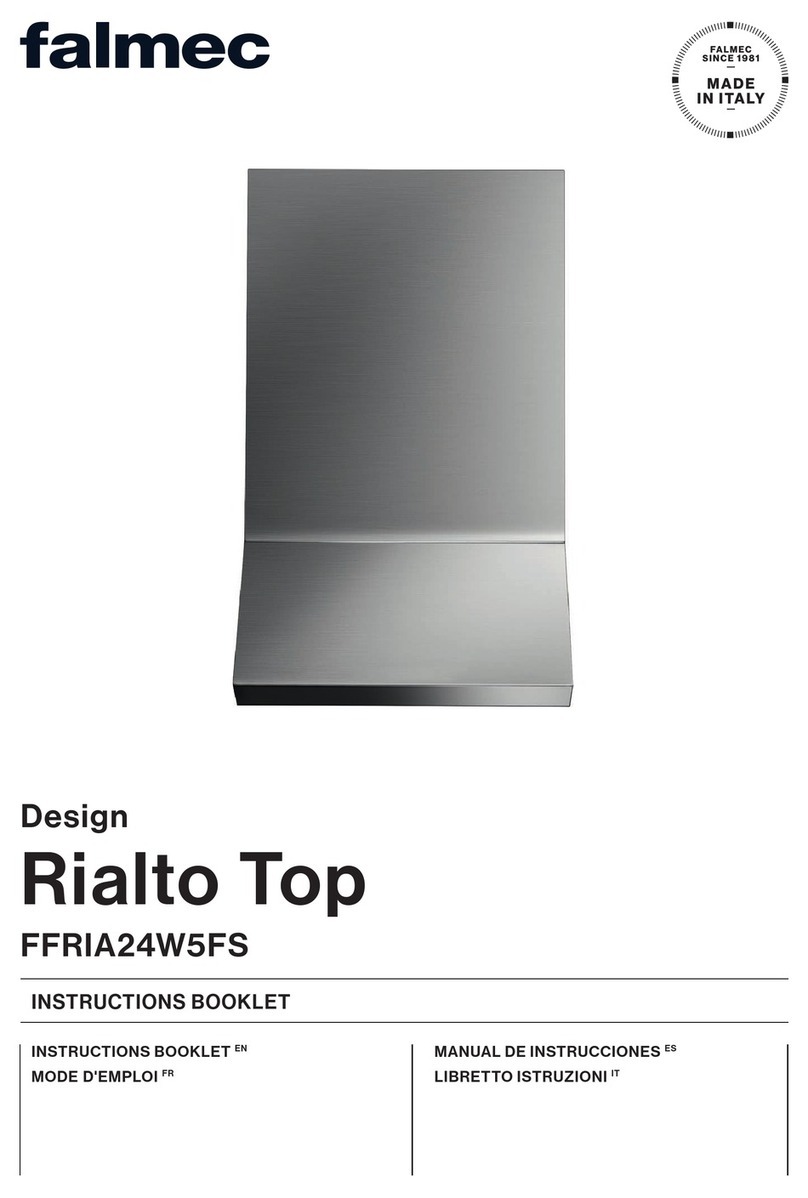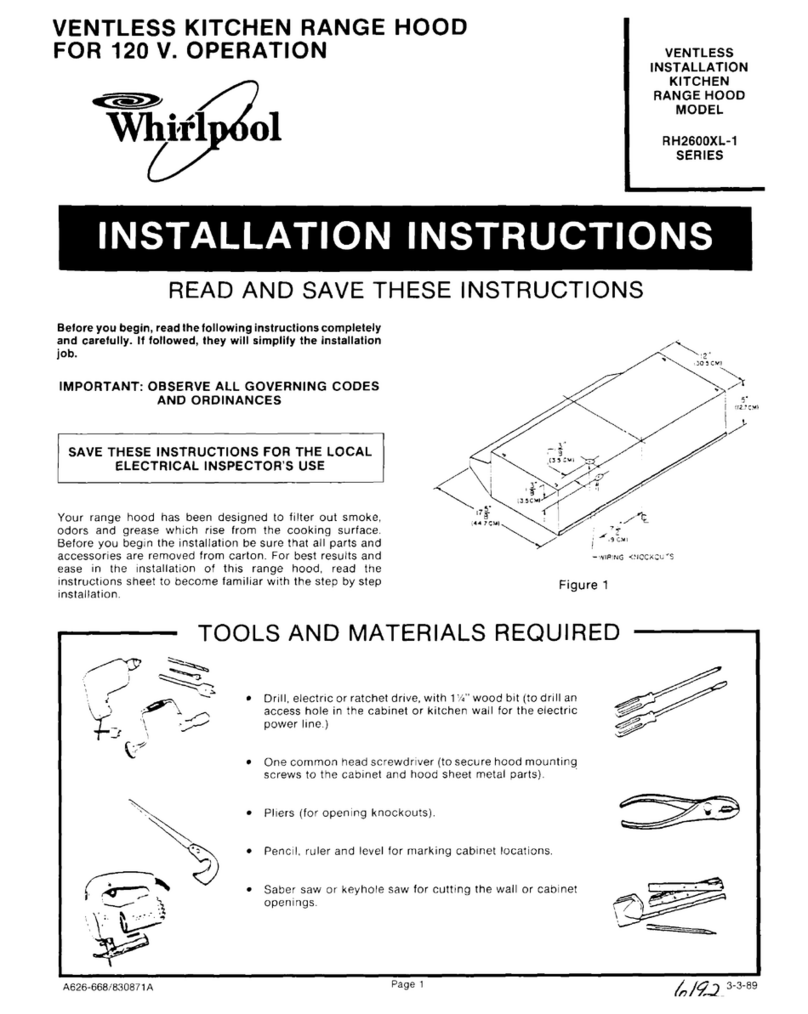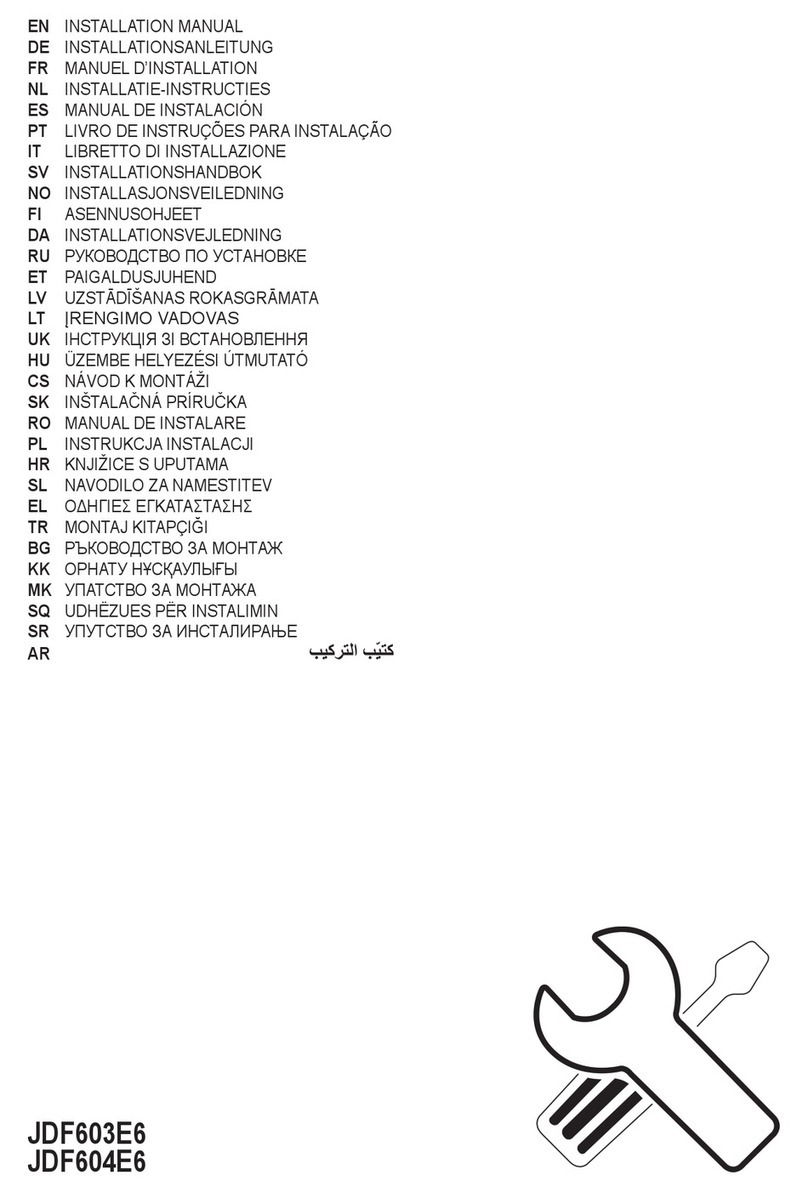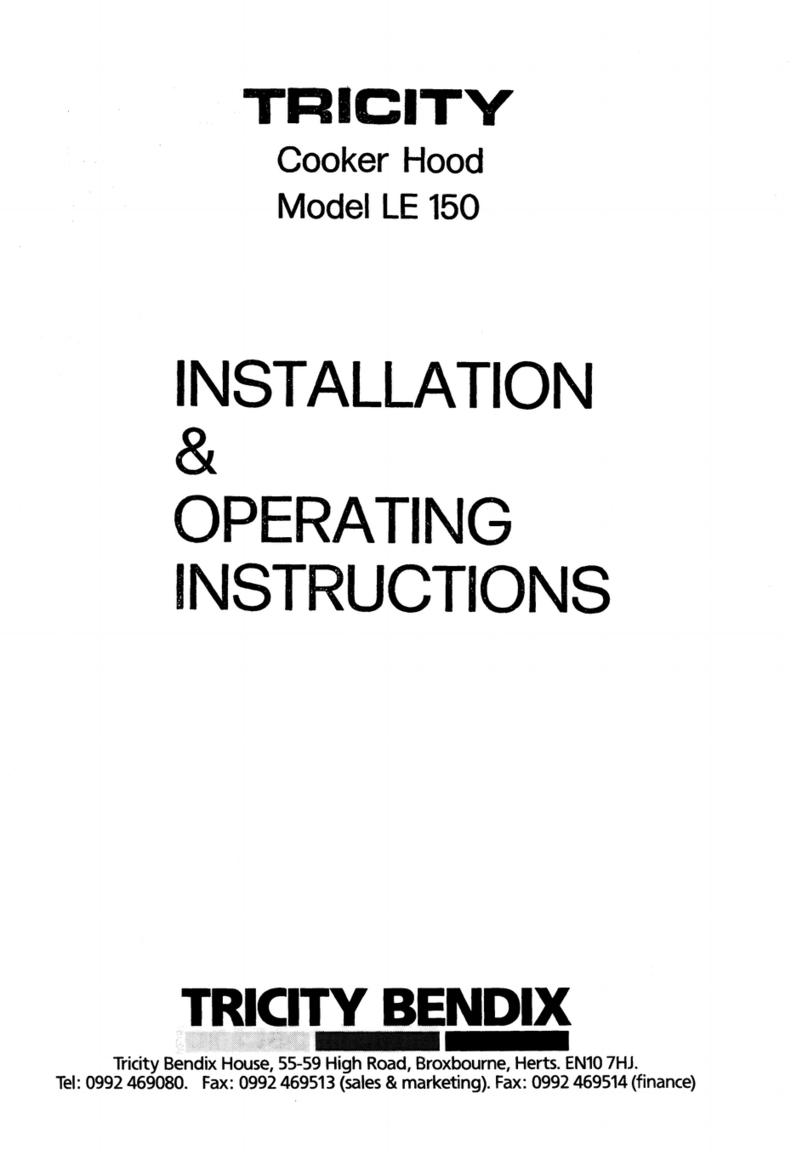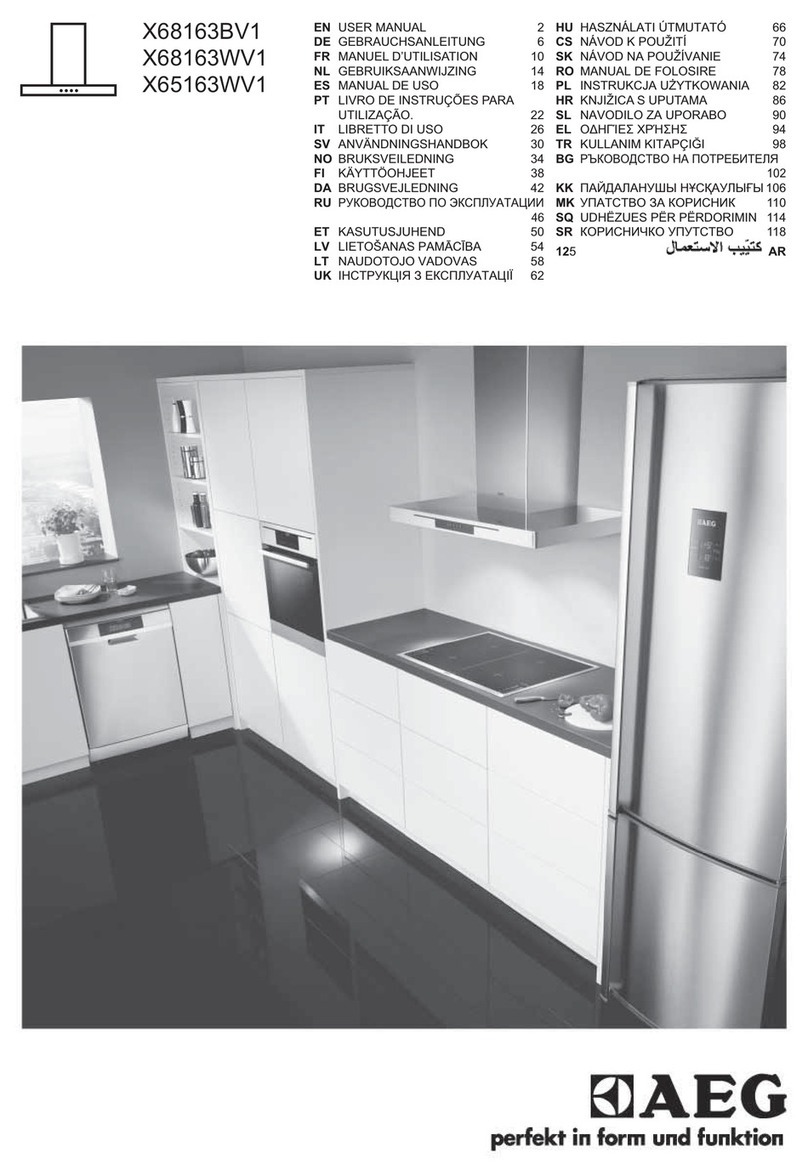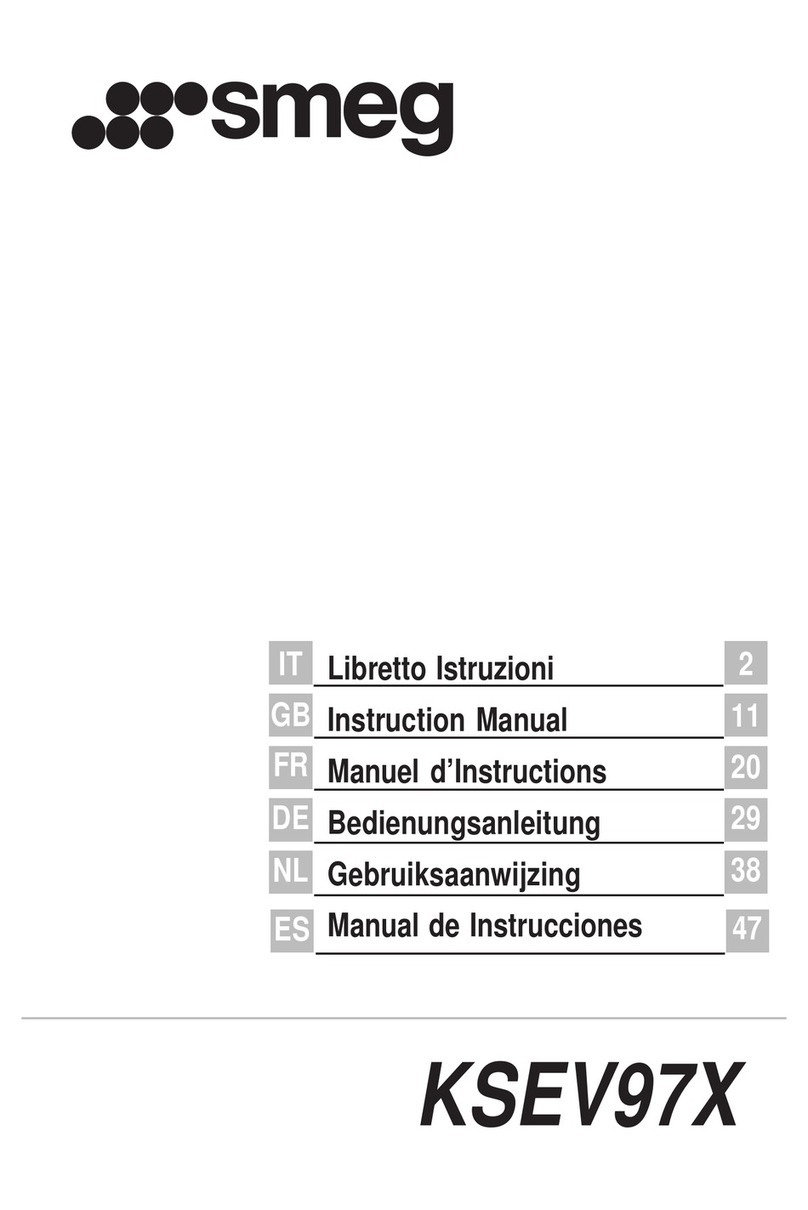
6
Lift the hood together with the structure and the
extension tubes to make the four springs (Fig.
7.6-E) hook to the slots (Fig. 7.3-C). Then
tighten the two elements securely (Fig. 6.1 & Fig.
6.2) with the safety screws (Fig. 6.2-A) and
connect the hood tube to the drain hole.
Make the electrical connections. (For versions
with display only) Lift the lower pipe until the cable
strap coming out of the unit is uncovered and
connect it to the display cable strap. Put down the
lower pipe while paying attention it is being
properly introduced into the hood.
Lift the upper tube (Fig. 7.5) up to the ceiling and
insert the two self-tapping screws (Fig. 7.5-D).
Recirculation mode
Place the upper plate (Fig.5.1) on the ceiling. Drill
4 holes, 8 mm each, just next to the slots.
Insert the plastic dowels into the holes (Fig.5.1-
A). Fix the baffle (Fig. 5.2) to the upper bracket
(Fig.5.3) with the four self tapping screws
provided (Fig. 5.3 A). Screw up the plate
together with the baffle (Fig.5.1 B). Then
fasten the lower structure (Fig. 7.2) on the
hood by making its holes and the metric thread
screws welded on the fan support coincide (Fig.
7.1). Insert the washers and nuts provided (Fig.
7.2-A) and screw with an appropriate tool.
Connect the drainpipe to the power unit nozzle
and fix securely with a hose clamp. Insert the
upper structure (Fig. 7.3) into the lowest one
and adjust its height as required by matching it
with the cooking top’s minimum height. Tighten
the two structures securely with the screws
provided (Fig. 7.3-B). Insert the two extension
tubes (Fig. 7.4 & Fig. 7.5) from above the two
structures by making them come down to the
appropriate hood seat. Lift the hood together
with the structure and the extension tubes to
make the four springs (Fig. 7.6-E) hook to the
slots (Fig. 7.3-C). Then tighten the two
elements securely (Fig. 6.1 & Fig. 6.2) with the
safety screws (Fig. 6.2-A) and connect the hood
tube to the baffle’s lower hole.
Make the electrical connections. (For versions
with display only) Lift the lower pipe until the
cable strap coming out of the unit is uncovered
and connect it to the display cable strap. Put
down the lower pipe while paying attention it is
being properly introduced into the hood. Lift the
upper tube (Fig. 7.5) up to the ceiling and insert
the two self-tapping screws (Fig. 7.5-D).
Warning!
Before connecting the ducting pipe to the motor,
make sure the stop valve, which is on the air
outlet of the motor, can swing.
INSTALLATION
Before installing the appliance, make sure that
none of the parts are damaged in any way. In
case of damaged parts, contact your retailer
immediately and do not proceed with installation.
Read all of the following instructions with care
before installing the appliance.
-Use a minimum 150mm air outlet pipe of the
shortest possible length.
-Limit the number of pipe bends.
-Use a material approved by standards and
regulations.
-Avoid any sudden changes in pipe section
(recommended constant diameter: 150 mm or
equal surface area).
Attention: at least two people are needed to
perform the installation.
Before installing the appliance, in order not to
damage the appliance itself, the metal grease filter
should be removed. Such filter can be removed
by pushing the special filter handle toward the
back side of the cooker hood and turning it
downwards so to unfasten it from its slot (Fig. 3
A).
Before fixing the hood, place the electric feeding
properly into the ornamental pipe and place a
hole for air evacuation for use in ventilation
mode.
Ventilation mode
Place the upper plate (Fig.5.1) on the ceiling. Drill
4 holes, 8 mm each, just next to the slots.
Insert the plastic dowels into the holes
(Fig.5.1-A) and screw up the plate on the ceiling
(Fig. 5.1-B). Then fasten the lower structure (Fig.
7.2) on the hood by making its holes and the
metric-thread screws welded on the fan support
coincide (Fig. 7.1). Insert the washers and nuts
provided (Fig. 7.2-A) and screw with an
appropriate tool.
Connect the drainpipe to the power unit nozzle
and fix securely with a hose clamp. Insert the
upper structure (Fig. 7.3) into the lowest one
and adjust its height as required by matching it
with the cooking top’s minimum height. Tighten
the two structures securely with the screws
provided (Fig. 7.3-B). Insert the two extension
tubes (Fig. 7.4 & Fig. 7.5) from above the two
structures by making them come down to the
appropriate hood seat.


